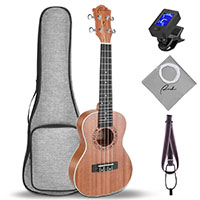By covering news, politics, weather, sports, entertainment, and vital events, the daily media shape the dominant cultural, social and political picture of society.
Beyond the media networks, independent news sources have evolved to report on events which escape attention or underlie the major stories.
An exponentially growing phenomenon, the blogosphere can be abuzz with news that is overlooked by the press and TV networks.
Media coverage during the 2008 Mumbai attacks highlighted the use of new media and Internet social networking tools, including Twitter and Flickr, in spreading information about the attacks, observing that Internet coverage was often ahead of more traditional media sources.
Media integrity refers to the ability of a news media outlet to serve the public interest and democratic process, making it resilient to institutional corruption within the media system, economy of influence, conflicting dependence and political clientelism.
TELEVISION
Television became available in crude experimental forms in the late 1920s. After World War II, an improved form became popular in the United States and Britain.
During the 1950s, television was the primary medium for influencing public opinion. In the mid-1960s, color broadcasting was introduced in the US and most other developed countries.
By the 1920s, Scottish inventor John Logie Baird gave the first public demonstration of televised silhouette images in motion, at Selfridge’s Department Store in London.
In 1928, Baird’s company (Baird Television Development Company/Cinema Television) broadcast the first transatlantic television signal, between London and New York, and the first shore-to-ship transmission.
Digital television transition started in late 2000s.
The advent of digital television allowed innovations like smart TVs. A smart television, sometimes referred to as connected TV or hybrid TV, is a television set or set-top box with integrated Internet and Web 2.0 features, and is an example of technological convergence between computers, television sets and set-top boxes.
Besides the traditional functions of television sets and set-top boxes provided through traditional broadcasting media, these devices can also provide Internet TV, online interactive media, over-the-top content, as well as on-demand streaming media, and home networking access. with Web TV.
NEWS MEDIA
The news media or news industry are those elements of the mass media that focus on delivering news to the general public or a target public. These include print media (newspapers, newsmagazines), broadcast news (radio and television), and more recently the Internet (online newspapers, news blogs, etc.).
Television and radio programs are distributed through radio broadcasting or cable, often simultaneously. By coding signals and having decoding equipment in homes, the latter also enables subscription-based channels and pay-per-view services.
A broadcasting organization may broadcast several programs at the same time, through several channels (frequencies), for example BBC One and Two.
On the other hand, two or more organizations may share a channel and each use it during a fixed part of the day. Digital radio and digital television may also transmit multiplexed programming, with several channels compressed into one ensemble.
CLICK ON ABOVE GRAPHIC FOR MORE INFORMATION
MUSIC INDUSTRY
The music industry consists of the companies and individuals that make money by creating and selling live music performances, sound recordings and music videos of songs and instrumental pieces.
The modern music industry emerged between the 1930s and 1950s, when records supplanted sheet music as the most important product in the music business. In the commercial world, people began referring to “the recording industry” as a loose synonym for “the music industry”.
In the 2000s, a majority of the music market is controlled by three major corporate labels: the French-owned Universal Music Group, the Japanese-owned Sony Music Entertainment, and the US-owned Warner Music Group.
Labels outside of these three major labels are referred to as independent labels. The largest portion of the live music market for concerts and tours is controlled by Live Nation, the largest promoter and music venue owner.
Live Nation is a former subsidiary of iHeartMedia Inc, which is the largest owner of radio stations in the United States.
The music industry has undergone drastic changes since the advent of widespread digital distribution of music via the Internet, which includes both illegal file sharing of songs and legal music purchases.
A conspicuous indicator of this is total music sales: since 2000, sales of recorded music have dropped off substantially while live music has increased in importance. The largest music retailer in the world is now digital: Apple Inc.’s online iTunes Store.
PRINTED MUSIC IN EUROPE
Music publishing followed the evolution of printing technologies after the mid-15th century, when mechanical techniques for printing music were first developed. The earliest example, a set of liturgical chants, dates from about 1465, shortly after the Gutenberg Bible.
Prior to this time, music had to be copied out by hand. This was a very labor-intensive and time-consuming process, so it was usually undertaken only by monks and priests seeking to preserve sacred music for the church. The few collections of secular music that are extant were commissioned and owned by wealthy noblemen.
Until the 18th century, the processes of formal composition and of the printing of music took place for the most part with the support of patronage from aristocracies and churches.
In the mid-to-late 18th century, performers and composers such as Wolfgang Amadeus Mozart began to seek commercial opportunities to market their music and performances to the general public.
In the 19th century, sheet-music publishers dominated the music industry. In the United States, the music industry arose in tandem with the rise of black face minstrelsy. In the late part of the century the group of music publishers and songwriters which dominated popular music in the United States became known as Tin Pan Alley.
The start of Tin Pan Alley is usually dated to about 1885, when a number of music publishers set up shop in the same district of Manhattan.
CLICK ON ABOVE GRAPHIC FOR MORE INFORMATION
ADVENT OF RECORDED MUSIC
At the dawn of the early 20th century, the recording of sound began to function as a disruptive technology to the commercial interests publishing sheet music. During the sheet music era, if you wanted to hear popular new songs, you would buy the sheet music and play it at home.
Commercially released phonograph records of musical performances starting in the late 1880s, and later the onset of widespread radio broadcasting starting in the 1920s, forever changed the way music was heard.
Opera houses, concert halls, and clubs continued to produce music and perform live, but the power of radio allowed obscure bands to become popular on a nationwide and sometimes worldwide scale.
The “record industry” eventually replaced the sheet music publishers as the industry’s largest force. A multitude of record labels came and went.
Many record companies died out as quickly as they had formed, and by the end of the 1980s, the “Big 6”, EMI, CBS, BMG, PolyGram, WEA and MCA, dominated the industry. Sony bought CBS Records in 1987 and changed its name to Sony Music in 1991.
In mid-1998, PolyGram merged into the Universal Music Group (formerly MCA).
Since then, Sony and BMG merged in 2004, and Universal took over the majority of EMI’s recorded music interests in 2012. EMI Music Publishing, also once part of the now defunct British conglomerate, is now co-owned by Sony.
RISE OF DIGITAL DISTRIBUTION
In the first decade of the twenty first century, digitally downloaded and streamed music, much of it illegally downloaded or streamed, at least at first, became more popular than physical recordings (e.g. CDs, tapes).
At the same time, consumers spent less money on recorded music than they had in the 1990s. Total revenues in the U.S. dropped by half, from a high of $14.6 billion in 1999 to $6.3 billion in 2009.
In the 15 or so years of the Internet economy, the digital music industry has come a long way, but there are still major hurdles to cross.
Platforms like iTunes, Spotify, and Google Play are major improvements over the early illegal file sharing days, but the multitude of service offerings and revenue models make it difficult to understand the true value of each and what they can deliver for musicians and music companies.
Recording artists now rely on live performance and merchandise sales (T-shirts, sweatshirts, etc.) for the majority of their income, which in turn has made them more dependent on music promoters like Live Nation (which dominates tour promotion and owns a large number of music venues).
CLICK ON ABOVE GRAPHIC FOR MORE INFORMATION
BUSINESS STRUCTURE
The music industry is a complex system of many different organizations, firms and individuals and has undergone dramatic changes in the 21st century. This is known as disintermediation. However, the majority of the participants in the music industry still fulfill their traditional roles, which are described below.
There are three types of property that are created and sold by the recording industry: compositions, recordings and media (such as CDs or MP3s). There may be many recordings of a single composition and a single recording will typically be distributed into many media.
COMPOSITIONS
Songs and other musical compositions are created by songwriters or composers and are originally owned by the composer, although they may be sold.
Traditionally, the copyright owner licenses or “assigns” some of their rights (e.g. distribution and sales) to publishing companies, by means of a publishing contract.
The publishing company (or a collection society operating on behalf of many such publishers, songwriters and composers) collects fees (known as “publishing royalties”) when the composition is used.
A portion of the royalties are paid by the publishing company to the copyright owner, depending on the terms of the contract. Typically, the publishing company will provide the owner with an advance against future earnings when the publishing contract is signed.
RECORDINGS
Recordings are created by recording artists, often with the assistance of record producers and audio engineers. They were traditionally made in recording studios (who are paid a daily or hourly rate) in a recording session.
In the 21st century, advances in recording technology have allowed many producers and artists to create “home studios”, bypassing the traditional role of the recording studio.
The record producer oversees all aspects of the recording, making many of the logistic, financial and artistic decisions in cooperation with the artist.
Recordings are (traditionally) owned by record companies. A recording contract specifies the business relationship between a recording artist and the record company. In a traditional contract, the company provides an advance to the artist who agrees to record music that will be owned by the company. The A&R department of a record company is responsible for finding new talent and overseeing the recording process.
The company pays for the recording costs and the cost of promoting and marketing the record. For physical media (such as CDs), the company also pays to manufacture and distribute the physical recordings.
Smaller record companies (known as “indies”) will form business relationships with other companies to handle many of these tasks. The record company pays the recording artist a portion of the income from the sale of the recordings, generally known as a mechanical royalty.
This portion is similar to a percentage, but may be limited or expanded by a number of factors, that are specified by the record contract. Session musicians and orchestra members are under contract to provide work for hire; they’re typically only paid one-time fees or regular wages for their services, rather than royalties.
MEDIA
Physical media (such as CDs) are sold by music retailers and are owned by the consumer. A music distributor delivers the physical media from the manufacturer to the retailer and maintains relationships with retailers and record companies.
The music retailer pays the distributor, who in turn pays the record company for the recordings. The record company pays mechanical royalties to the publisher, composer, and songwriter via a collection society.
In the case of digital downloads or streams, there is no physical media other than the consumer’s hard drive. The distributor is optional in this situation; large online shops may pay the labels directly, but digital distributors do exist to service vendors large and small.
LIVE MUSIC
A promoter brings together a performing artist and a venue owner and arranges contracts. A booking agency represents the artist to promoters, makes deals and books performances.
In the US, Live Nation is the dominant company in all of these roles: they own most of the large venues in the US, they are the largest promoter, and they own Ticketmaster.
CLICK ON ABOVE GRAPHIC FOR MORE INFORMATION
Payseur Family History
Fritz Springmeier – Bloodlines of Illuminati
The Rothschild Dynasty
The Disney Story
The above four links open a new tab in Louis Payseur’s site.
Music – Curated Presentation
Family – Curated Presentation
Health – Curated Presentation




















The beauty of the NEW EARTH model in music is social media as the way the artist reaches his audience. Just as street musicians performances are more potent and emotionally gratifying than a show in a big concert hall.
We want to reach each other’s HEARTS ♥️
LOVE FEELS SO MUCH BETTER THAN HATE.
Time to say goodby to ego ?
Well said Michelle